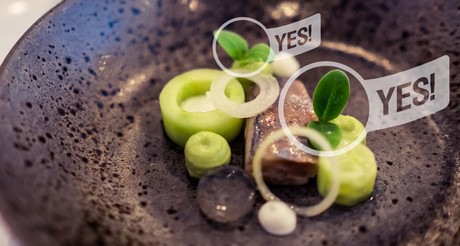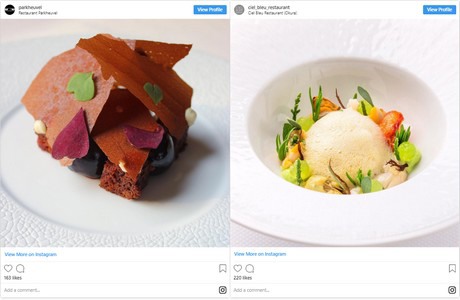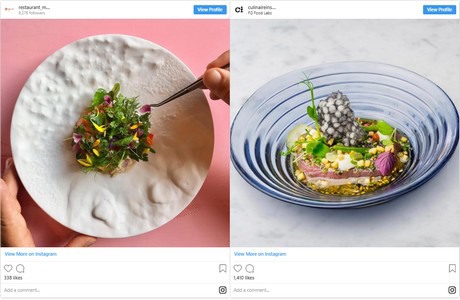As a producer, how do you obtain better insight into your end customers and their market? Koppert Cress chooses an innovative solution and uses artificial intelligence to analyze photos that restaurant visitors post on Instagram.

There can be up to five stages between the sale of Koppert Cress’ cresses and specialties, and their arrival in the restaurant kitchen. The rapid growth and complex supply chain mean that the company sometimes does not have a good overview of which chefs are working with their products, or where they are in the world. “I am regularly sent photos by friends and acquaintances”, explained Stijn Baan. “For example, from the Maldives or Dubai, markets where we don’t actually have any partners. When I received a photo from Gaggan, the top Indian restaurant in Bangkok, I contacted them to find out how our blue punnets arrived there.”
Analyzing Instagram photos
Data modeling experts from Rotterdam agency, Gibbs Analytics Consulting, suggested mapping out the market by analyzing data directly at end-customer level. They developed a system that collects photos of dishes that are shared publicly on Instagram and then analyzes whether cress is used in the dishes. Artificial intelligence is used to enable the model to learn to identify cress. Based on a training set that comprises photos with and without dishes, and with and without cress, the model learned to decide for itself what is shown on the image.

Improving performance with additional photos
“We do not know the algorithm’s criteria”, explained Rene Segers from Gibbs. “It assesses photos at the level of individual pixels. This is in no way comparable to the way in which we look at a photo. If we examine its choices for individual photos, we could, for instance, notice that the algorithm has difficulty recognizing certain colors of cress or cress with very small leaves. You could then decide to add extra photos to the training set, hoping that this improves performance.”
108,000 photos in pilot
The system was tested in a small pilot that analyzed all 250 restaurants in the Netherlands and Belgium that have one or more Michelin stars. In a period of two-and-a-half years, guests in the Dutch and Belgian restaurants posted a total of 108,000 photos on their public Instagram accounts. The algorithm identified 58,000 of these photos and identified cress on plates in 24,000 photos.

Valuable information for marketing and sales
“As we know these markets well, we can check the outcomes against our own experience”, stated Stijn Baan. “The results indeed proved to be in line with our own information. For instance, there is a seasonal effect. And if we analyze the photos in more detail, we see, for example that ceviche is more often served with cress now than two years ago. So the model also offers valuable information for our marketing and sales.”
Signaling trends
In the coming period, Koppert Cress and Gibbs will be further expanding the system by also conducting analyses in other countries. Koppert Cress sees the method as a useful addition to their market research as well. Trends in top restaurants can be identified quickly. “Top chefs set gastronomic trends in motion”, emphasized Stijn Baan. “And these are translated to other restaurants and food services and ultimately also to consumer kitchens. We can use this model to follow how chefs use our products. Do they use them just as garnish or are they using them consciously for their flavor? Do they use cress only on cold dishes or also on hot ones?”

Responding to social media
It is also the case that chefs can no longer avoid channels such as Instagram. Food Inspiration even called it the major trend to which chefs should respond. Dishes need to be increasingly decorative so that they look good on social media. Some restaurants even adjust their lighting for this.
Identifying new markets
Koppert Cress does not aspire to export globally from The Netherlands. The company prefers to use local partners, also for sustainability reasons. This model can contribute to identifying the most promising markets. Koppert Cress also intends to further expand the model step-by-step, so that it starts to recognize more products - different vegetables, other cuisines, and possibly even how many restaurants apply the Dutch Cuisine standards.

Big data in the horticultural sector
“We also want to make the sector aware of these opportunities”, stated Stijn Baan. “To many in the horticultural sector, big data may seem somewhat far removed. While it does in fact offer many opportunities in terms of marketing, sales, product development and crop optimization. We can already do all of this right now. The technology is here and it is affordable.”
For more information: Koppert Cress
Koppert Cress
De Poel 1
2681 MB Monster
Netherlands
+31(0)174 24 28 19
www.koppertcress.com
 Gibbs Analytics Consulting
Gibbs Analytics Consulting
Coolsingel 104
3011 AG Rotterdam
Netherlands
[email protected]
+31(0)10 - 786 04 27
www.gibbs.ac
